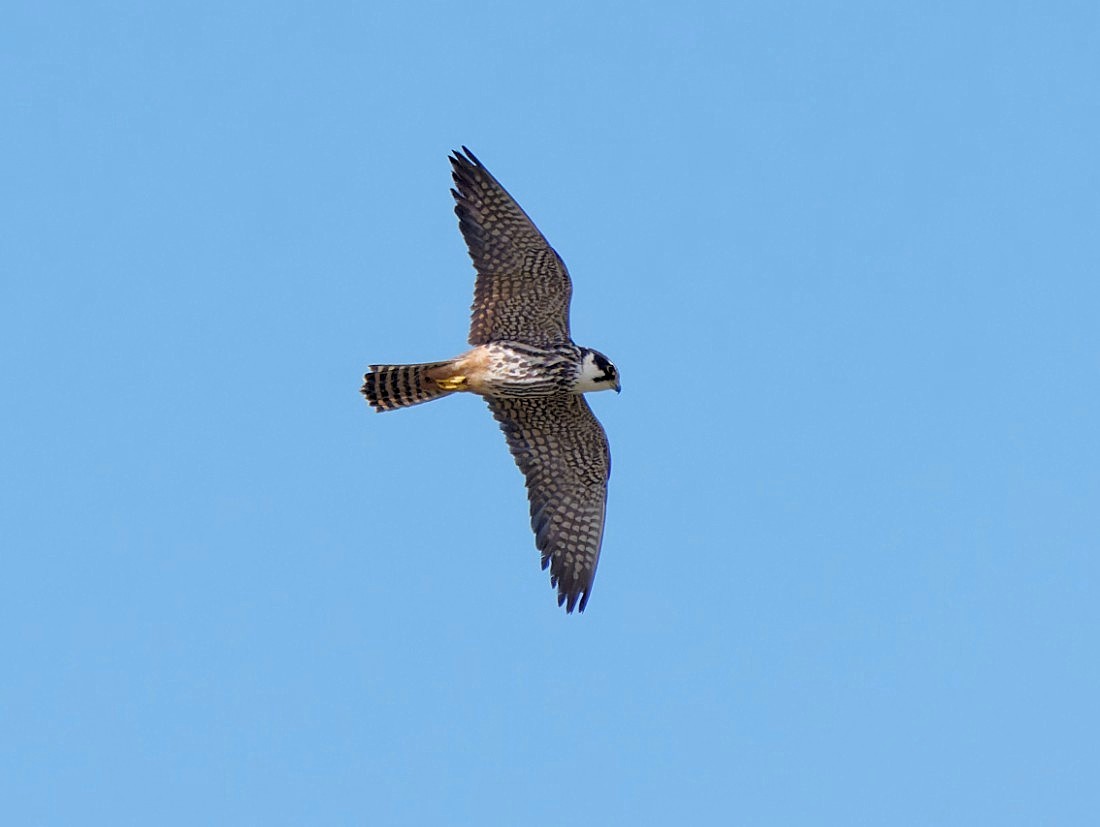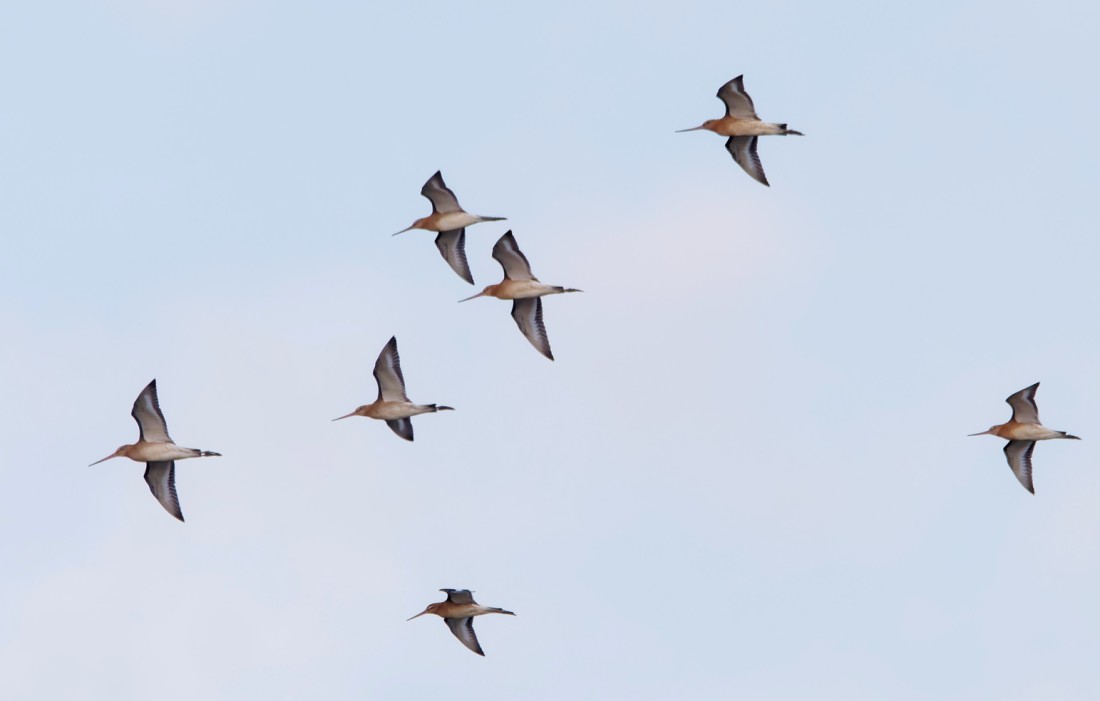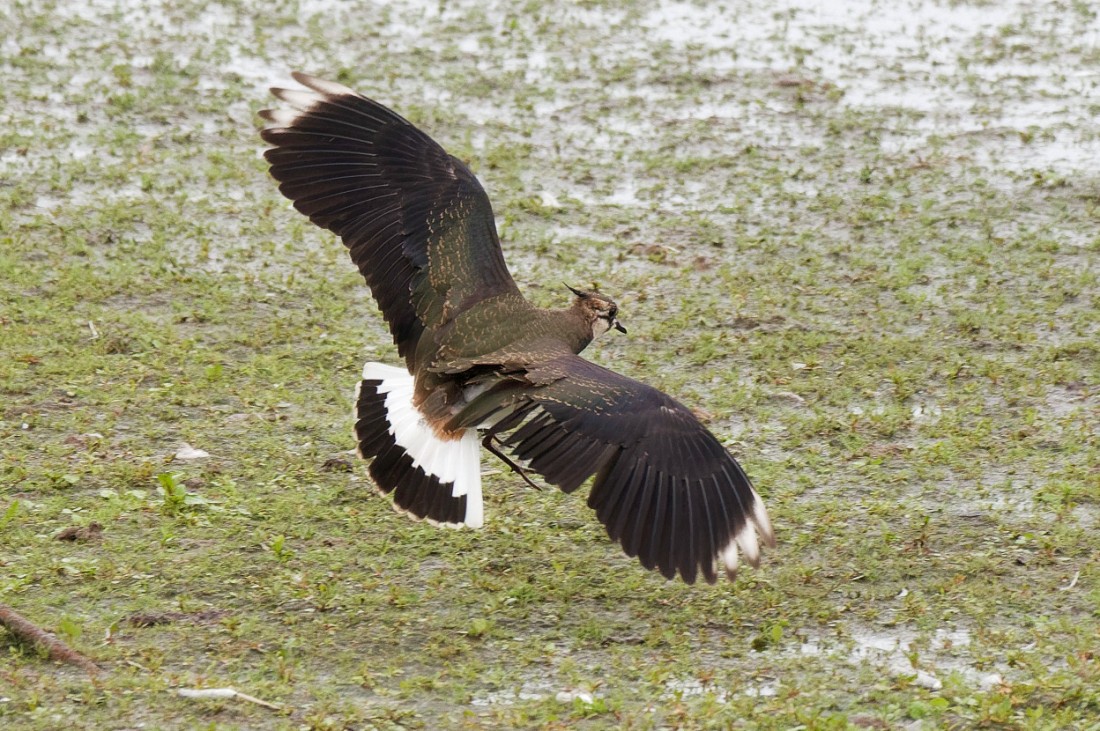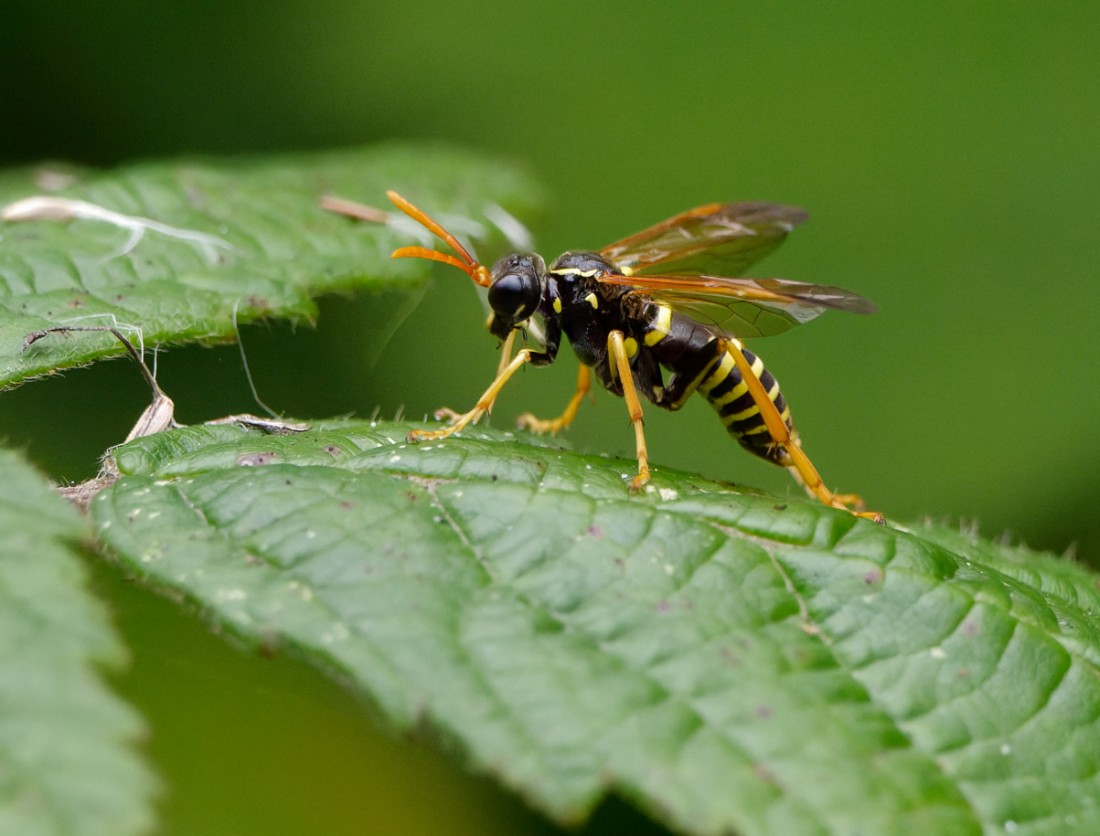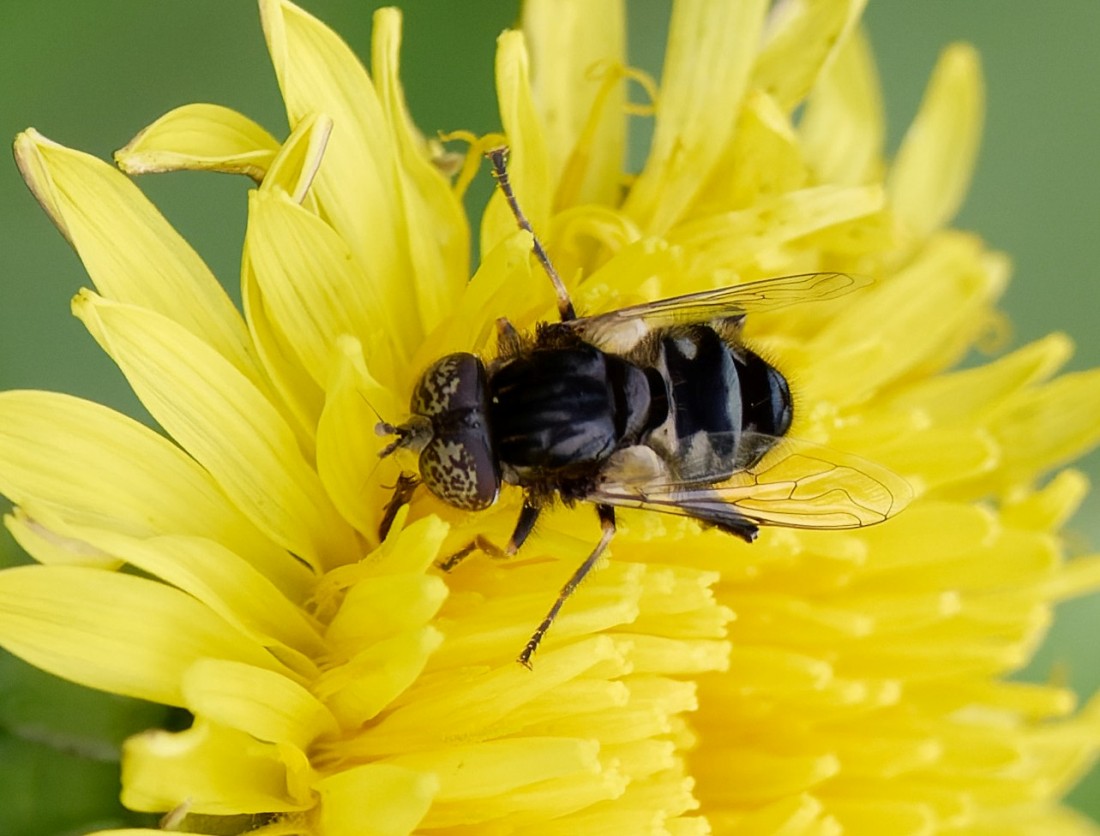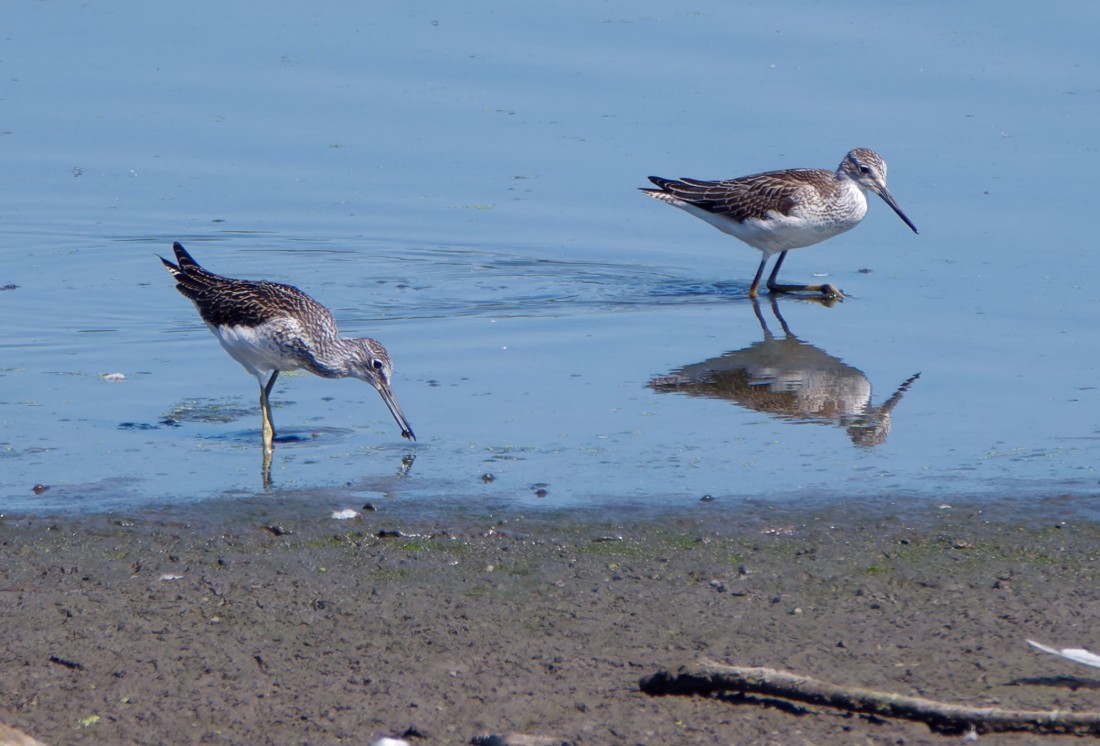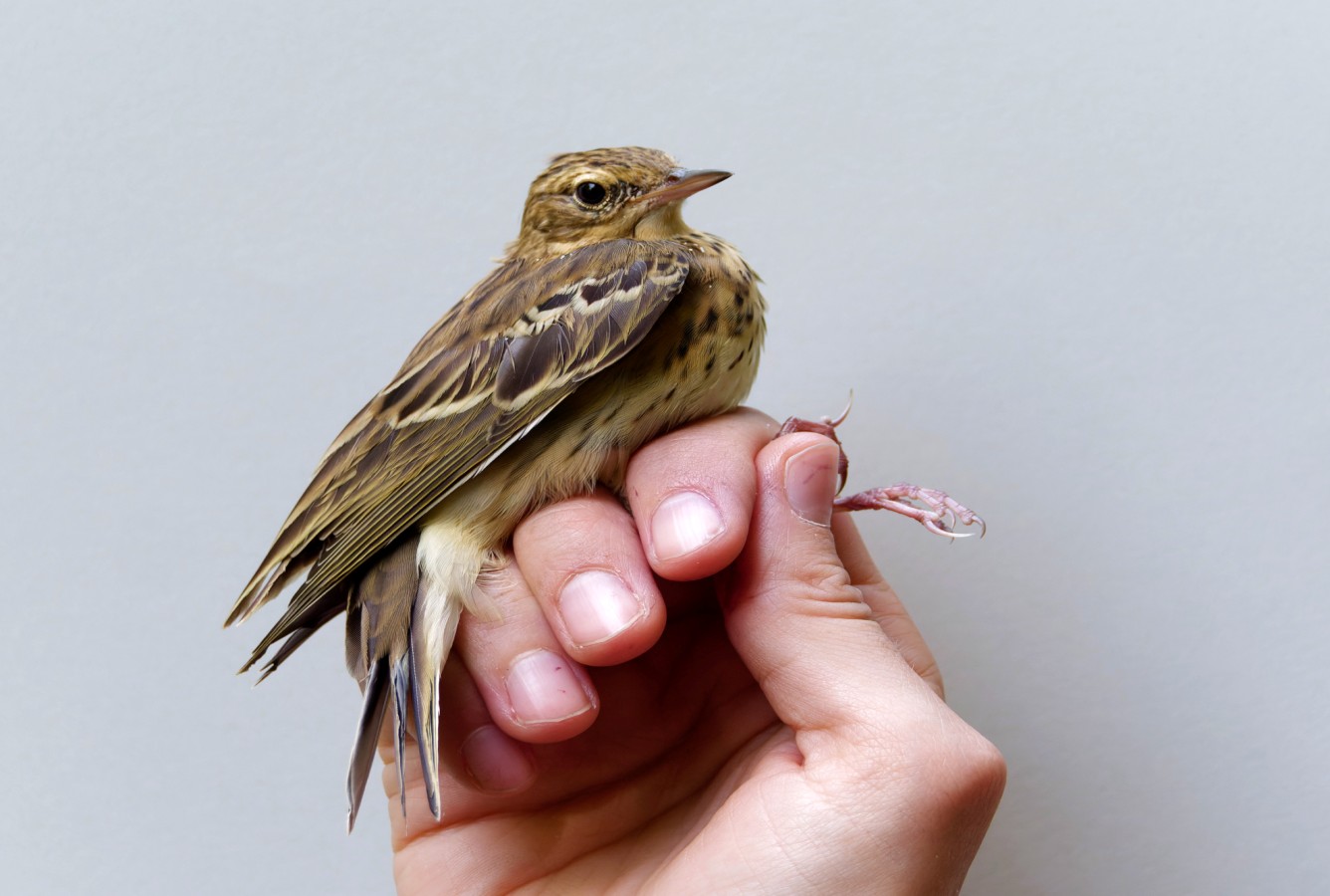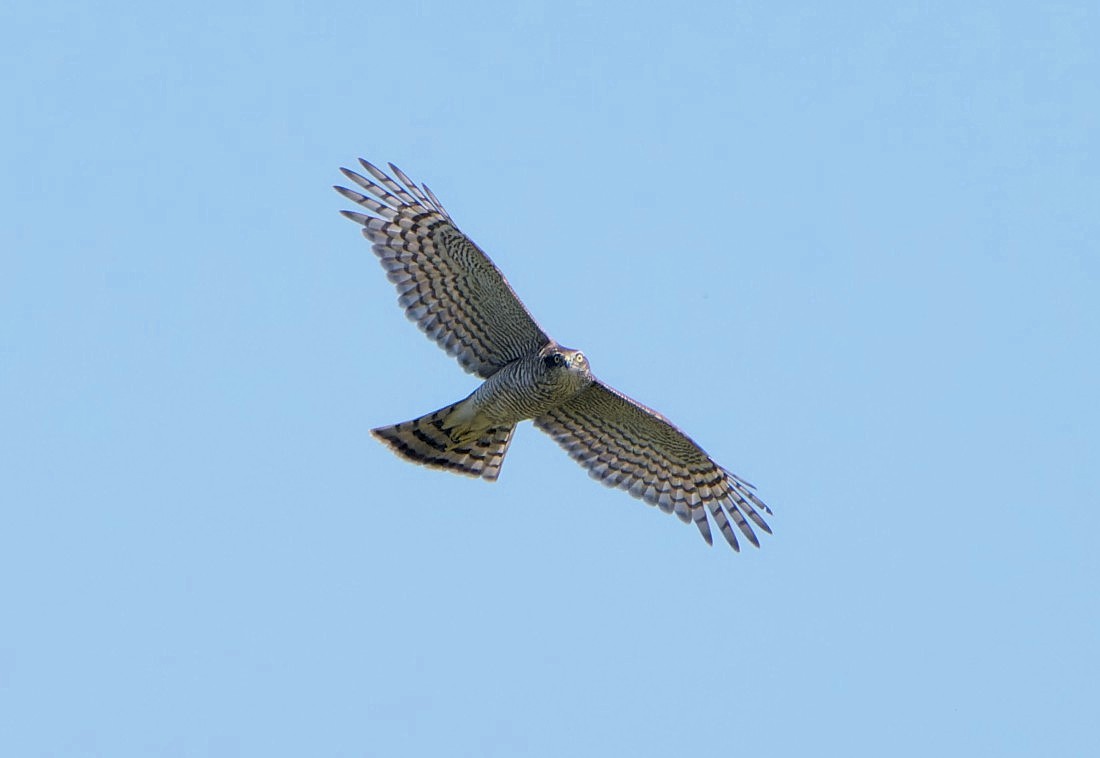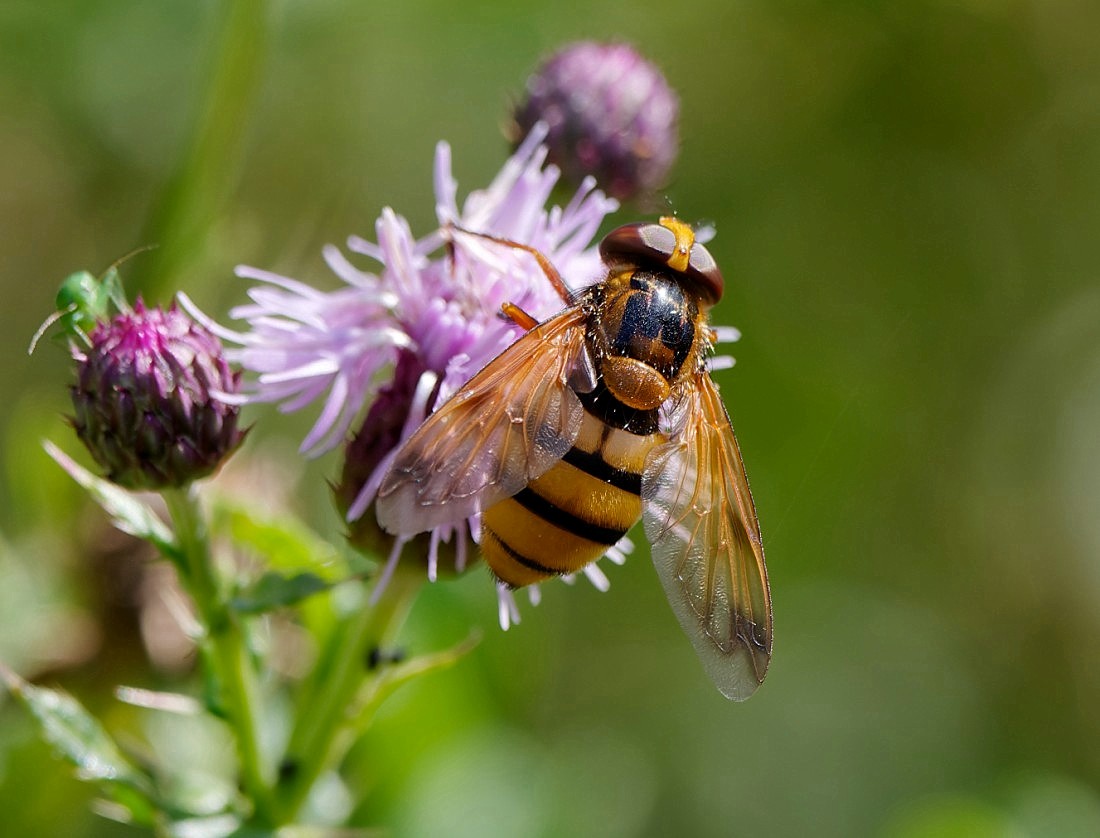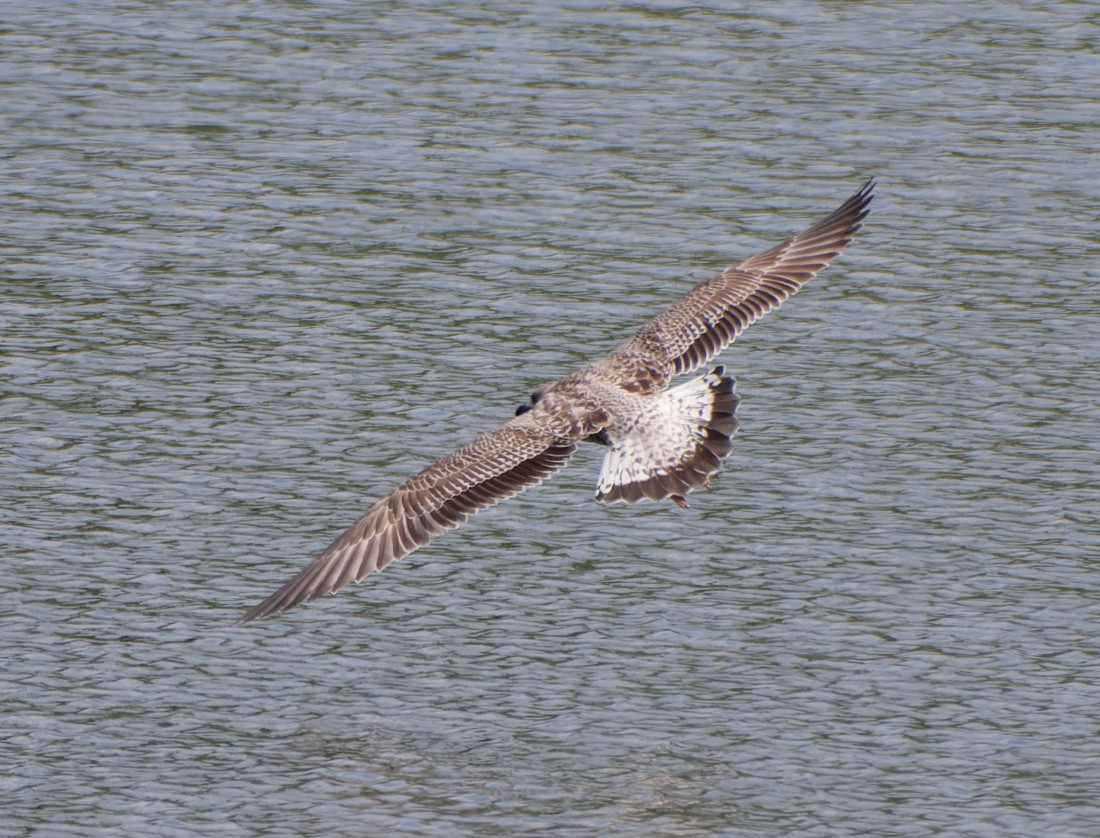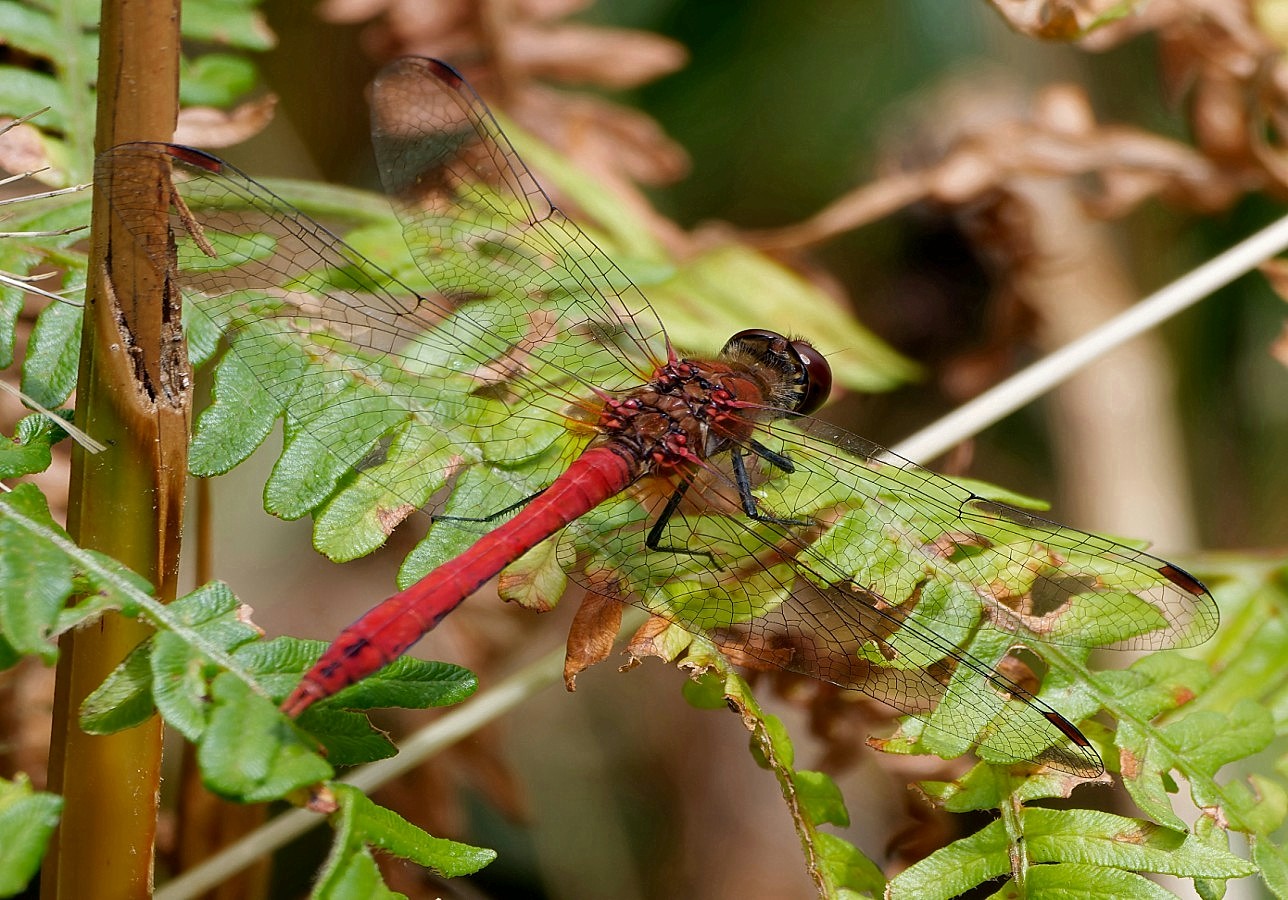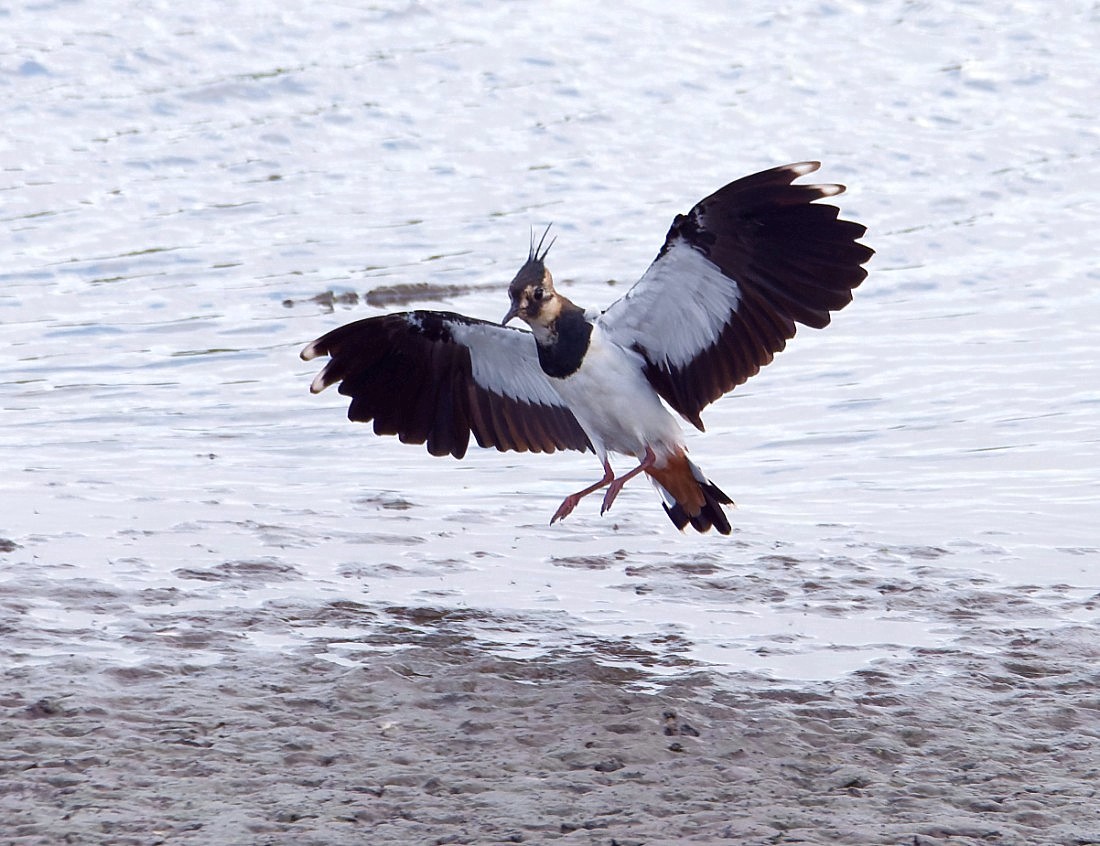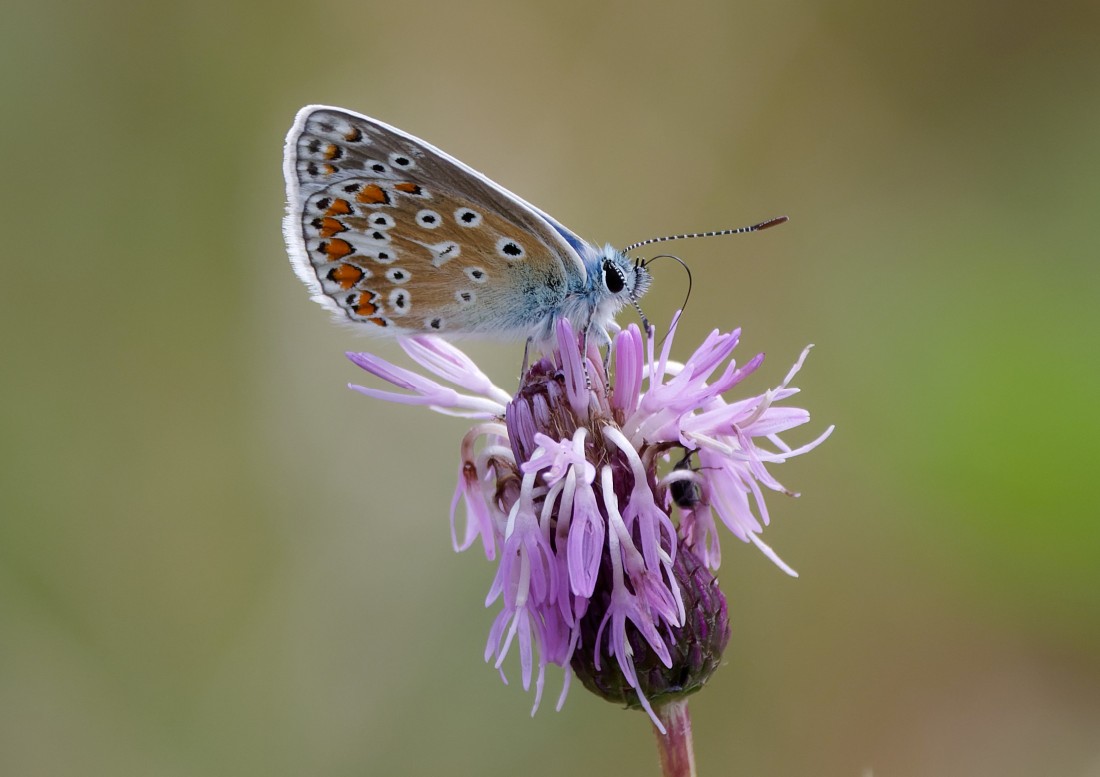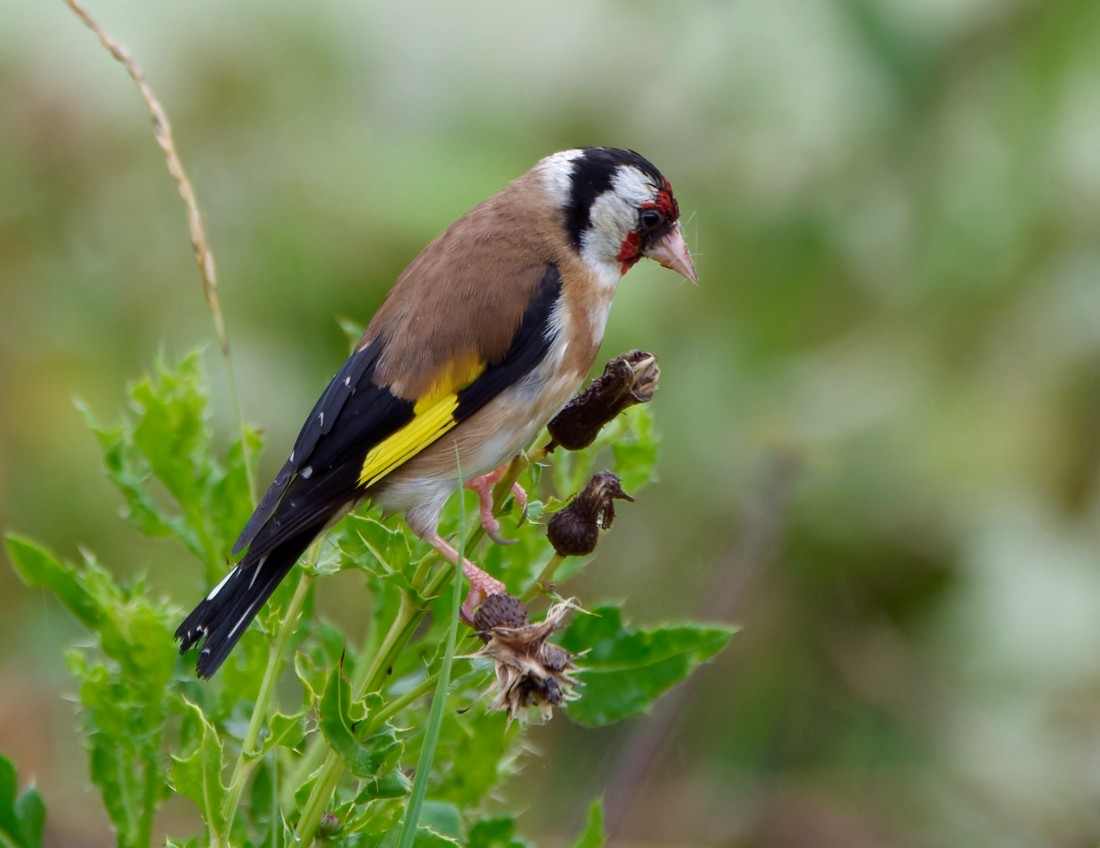Woolston Eyes Monthly Sightings
2022-08-30
The conditions this morning looked good for visible migration, with blue skies and a fresh north-easterly breeze. I started at dawn on No.3 bed, where a juvenile Water Rail was in front of the Morgan Hide, along with 3 Green Sandpipers, 6 Black-tailed Godwits, 8 Snipe, a juvenile Marsh harrier and a Kingfisher. A single Swift, beating its way south, was a nice late sighting, too. I then joined Dan Owen on the new No.4 bed wetland, where he had already noted 3 Garganeys, 11 Black-tailed Godwits, 3 Green Sandpipers and 2 Snipe. Over the next five hours we were treated to 1 Tree Pipit (our 25th so far this month!), 2 Greenshanks, another Green Sandpiper, 3 more Swifts, 41 Swallows, 13 Sand Martins and 10 House Martins. The morning finished well, with a Hobby arriving to catch dragonflies in front of the viewing platform. Hobbies usually hunt dragonflies by hawking for them as they rise on warm air. In these cool conditions, however, this little immature male was making high speed stoops to snatch them as they skimmed just above the water., before dismembering and eating them on the wing. Photo of the Hobby Cheers David Bowman
Submitted by: David Bowman
2022-08-27
We don’t usually have our first session of visible migration watching till September. Today, though, the weather was so nice we decided to settle ourselves on the viewing platform overlooking the No.4 bed wetland and see what passed over. It turned out to be a good decision and by the end of the morning we had enjoyed highlights of: 1 Tree Pipit (amazingly, the 25th sighting so far this month), 3 Yellow Wagtails, 15 Black-tailed Godwits, 2 Redshanks, 4 Green Sandpipers, 10 Snipe, 1 Little Egret, 1 Peregrine, 52 Swallows, 16 Sand Martins, 36 House Martins and perhaps less pleasingly, 1 Ring-necked Parakeet. These predominantly green, long-tailed parakeets are the UK’s most abundant naturalised parrot, with a population approaching 10,000 pairs. Initially established in the south of England in the 1960s, they have steadily spread northwards and are now well established in the Manchester area, where hundreds roost not far from the city centre. The jury is still out on their likely impact on our native breeding birds. Photo of some of the godwits. Cheers David Bowman (with Dave Steel and Helen Wynn)
Submitted by: David Bowman
2022-08-25
A change of scene this morning, with Dave Steel and I conducting a dawn survey of farmland birds at Rixton Moss. With a nice area of seed-rich “set-aside” and an adjacent, weedy leguminous crop, the area at the far end of Hollybush Lane was jumping with birds, including: 1 Whinchat, 3 Yellowhammers, 60 Reed Buntings and 280 Linnets. Other nice counts included a single Yellow Wagtail, 9 Grey Partridges, 1 Swift, 35 Swallows, 1 Kingfisher and 55 Collared Doves. Meanwhile, back at the Reserve, Dan Owen had recorded an unprecedented 8 Tree Pipits, including one which he managed to catch and ring. When I arrived, mid-morning, two more flew over, bringing the total for the month to an amazing 21. As ever, at this time of year, a few waders were present, including 2 Green Sandpipers, 5 Black-tailed Godwits and 8 Snipe, and one of the local Hobbies also put in an appearance. Photo of a Lapwing Cheers David Bowman
Submitted by: David Bowman
2022-08-24
Yesterday was one of those still, humid, late summer days when the birding is slow but, with effort, some good things can still be found. Most interesting was the continued movement of Tree Pipits, with 4 recorded passing low overhead. This brings the number of records this month to 12, when in an average year we’re lucky to record one or two. Wader variety was decent, too, with totals of: 1 Common Sandpiper, 1 Little Ringed Plover, 2 Black-tailed Godwits, 4 Green Sandpipers, 12 Snipe and small numbers of Lapwings. Two Hobbies were also present, on and off throughout the morning, with an immature male making several close passes in front of the Morgan Hide. Apart from the Tree Pipits, the only visible passage was of 35 Swallows moving south and for the first time since they arrived at the end of April, we didn’t manage to find a Swift. Most of our Swifts are long gone for another year, but for a while yet, we’ll be scanning for the odd late ones, passing through from further north. The link is to a short video showing some of the 100s of Goldfinches feeding on No.4 bed, along with a few of the waders from in front of the Morgan Hide. https://youtu.be/bkucGPPk0Ts Cheers David Bowman (with Dan Owen)
Submitted by: David Bowman
2022-08-23
Butterfly totals for 19th to 23rd August including the river; 95 Common Blue, 82 Speckled Wood, c.65 Small White, c. 30 Green-veined White, 10 Meadow Brown, 3 Gatekeeper, 3 Large White, 3 Peacock, 2 Small Tortoiseshell, 2 Red Admiral, 1 Small Copper, 1 Holly Blue and 1 Painted Lady.
Submitted by: Dave Hackett
2022-08-21
When the sun came out yesterday morning a small number of dragonflies appeared on No.3 Bed, including Common and Ruddy Darters as well as Brown and Migrant Hawkers.
Photo of a Migrant Hawker
Submitted by: Brian Baird
2022-08-21
Yesterday felt autumnal early on, with the odd shower before becoming warm and sunny. There was plenty of variety, with a steady trickle of passage and a nice surprise at the end of the morning. Seven species of wader were noted, including 1 Little Ringed Plover, 1 Greenshank, 6 Green Sandpipers, 5 Black-tailed Godwits, 7 Snipe and plenty of Lapwings. The undoubted highlight, though, came just as we were about to leave, when sharp-eyed Dan Owen picked up a stunning summer-plumaged Grey Plover, which tried to land in front of the Morgan Hide before carrying on to the west. Grey Plovers are one of the less common waders which winter around the coast of the UK and are rarely encountered inland, so a really nice find. Other nice sightings included: 1 Tree Pipit, 3 Yellow Wagtails, 1 Garganey, 1 Black-necked Grebe, 1 Hobby, 1 Peregrine and 1 Swift. Photo of a Figwort Sawfly Cheers David Bowman (with Dan Owen, Helen Wynn, Dave Steel, Sue Haddock and Brian Baird)
Submitted by: David Bowman
2022-08-18
The cooler, overcast conditions this morning always seemed better for encouraging visible passage than the hot, muggy weather which has dominated recently. Sure enough, at first light on No.3 bed, 5 Dunlins flew through, while 2 Black-tailed Godwits dropped in to join 2 which were already feeding in front of the Morgan Hide. Four Green Sandpipers were also feeding actively while a Garganey and, at least 420 Gadwall were loafing out on the lagoon. Then it was a stroll over to No.4 bed for a rewarding few hours of scanning. Highlights were: 1 Greenshank, 2 Redshanks, 4 Black-tailed Godwits, 4 Green Sandpipers, 2 Garganey, 2 Black-necked Grebes, 7 Snipe, 2 Swifts, 27 House Martins, 21 Swallows and 345 Coot feeding on the water weed. Finally, back on No.3 bed, an elegant male Hobby was performing well, flying rings around the local corvids. Photo of a hoverfly? Cheers David Bowman
Submitted by: David Bowman
2022-08-16
It was overcast and humid this morning, with not too much movement. Nevertheless, by early afternoon we’d accrued some decent sightings, including: 5 Garganey, 2 Black-necked Grebes (a moulting adult and a juvenile), a passing Common Tern, 4 Green Sandpipers, 2 Black-tailed Godwits, 7 Common Snipe, a Hobby chasing Magpies, 6 Ravens drifting south in a group, a single Swift and a few hirundines. The link is to a short video showing some of the waders from the last two visits, including the Greenshanks from Saturday and today’s Hobby. https://youtu.be/tsfMTF4GtGc Photo of Saturday’s Greenshanks Cheers David Bowman (with Dan Owen)
Submitted by: David Bowman
2022-08-13
It was another roasting hot morning, with some really good birds to be found. We started not long after dawn on No.4 bed, where two of the long-staying Garganeys and a juvenile Black-necked Grebe were still present. The new wetland has been very attractive to Little Grebes and 18 were feeding actively as the water level continues to steadily recede. Then, with the thermometer rising, we scuttled for the shade of the Morgan Hide, where the light north-easterly breeze took the edge off the heat. Clear skies and a wind from the eastern quadrant can usually be relied upon to deliver the odd interesting migrant, so we waited patiently. Four Green Sandpipers, 2 Black-tailed Godwits and 10 Snipe were good for starters but the highlights came, as often the case, towards lunchtime when 2 Greenshanks dropped in and a Tree Pipit was trapped by Kieran Foster’s ringing team. Tree Pipits are a summer visitor which breeds in open wooded habitat and is usually a very scarce visitor to the Reserve but, surprisingly, this was our sixth in the last ten days. Photo of the Tree Pipit Cheers David Bowman (with Dan Owen)
Submitted by: David Bowman
2022-08-11
Butterfly totals for August including the river; 103 common blue, 87 gatekeeper, c.44 green-veined white, 37 speckled wood, 34 meadow brown, 28 small white, 8 red admiral, 6 comma, 6 peacock, 5 large white, 3 holly blue, 2 brimstone, 2 small tortoiseshell, 2 small copper, 1 painted lady.
Submitted by: Dave Hackett
2022-08-11
On a scorching hot morning Brian Ankers and I met with colleagues Graham Jones and Becky Longden from the RSPB, to plan the habitat management work for the coming few months. Birding highlights included a juvenile male Hobby, 5 Little Egrets, 3 Green Sandpipers and 2 Black-tailed Godwits. Photo of a Sparrowhawk Cheers David Bowman
Submitted by: David Bowman
2022-08-09
Early on, a few waders were in front of the Morgan Hide on No.3 bed, including 2 Black-tailed Godwits, a Green Sandpiper, an Oystercatcher and a couple of Snipe. On No.4 bed 2 Tree Pipits and a Yellow Wagtail flew south over the wetland, while 5 Garganey and 2 Black-necked Grebes were still out on the water. Swift numbers continue to fall as the bulk of the population has already headed south, with just 18 counted. As summer migrants move south, though, they are replaced by species from further north and by the end of the morning 17 Snipe had arrived and will hopefully continue to grow in numbers throughout the autumn. As the heat we searched for and photographed some of the myriad of insects which are such a highlight of summer on the Reserve. Pick of the bunch were a Hornet Hoverfly and the real deal - a massive European Hornet, which managed to dodge getting its photo taken. Photo of the Hornet Hoverfly Cheers David Bowman (with Dan Owen)
Submitted by: David Bowman
2022-08-06
A really pleasant morning, starting with a dawn till mid-morning session on the No.4 bed wetland and ending with a lazy few hours in the Morgan Hide. No.4 bed delivered: an over-flying Tree Pipit, 5 Garganey, 2 Black-necked Grebes, 3 Yellow Wagtails feeding on the muddy margins, 3 Green Sandpipers, 2 Snipe and a light movement of 60 Swifts, 28 Sand Martins, 10 House Martins and 4 Swallows. No.3 bed, however, held the day’s surprise, when Dan Owen picked out a juvenile Yellow-legged Gull among the scores of juvenile Lesser Black-backed Gulls on the water. Yellow-legged Gulls breed further south in Europe but increasingly wander into the UK after the breeding season before heading back south in late autumn. Other notable sightings from No.3 bed included 2 more Green Sandpipers, a Hobby and a Red Underwing Moth sunning itself on the Morgan Hide. Photo of the Yellow-legged Gull Cheers David Bowman (with Dan Owen and Dave Steel)
Submitted by: David Bowman
2022-08-05
It was a fresher morning yesterday, with the odd shower passing through. Early on there was a flurry of passage over No.4 bed, with Tree Pipit, 8 Yellow Wagtails, Little Egret plus small numbers of Swifts and hirundines passing over. Three Green Sandpipers were the only waders of note, with 4 Garganey and a single moulting adult Black-necked Grebe also still present. A steady passage of Swifts over No.3 bed later in the morning resulted in a total count of 81, well down from the 1,000 recorded on Saturday. It was a good morning for raptors, too, with a juvenile Peregrine beating up the wildfowl on No.4 bed, 3 sightings of Hobby involving at least two different birds plus 3 Sparrowhawks, 8 Buzzards and 2 Kestrels. The count of 8 Ravens passing through was also high by our standards. Photo of a Snipe Cheers David Bowman (with Dan Owen)
Submitted by: David Bowman
2022-08-02
Butterfly totals for the past two weeks including the river; 170 gatekeeper, c.90 small white, c.50 green-veined white, 33 meadow brown, 33 speckled wood, 20 common blue, 19 peacock, 17 red admiral, 11 comma. 10 holly blue, 6 large white, 3 small tortoiseshell, 1 small skipper, 1 painted lady.
Submitted by: Dave Hackett
2022-08-02
It was a really wet one this morning, with plenty of much-needed rain hammering down till late morning. Consequently, we spent the early part of the day scanning from the Morgan Hide in No.3 bed where, given the conditions, not much was moving apart from Swifts and a few hirundines. By mid-morning 130 Swifts had gathered to feed, attracting the attentions of a couple of Hobbies. Other birds of note on the bed, early on, included a juvenile Garganey, 2 Black-tailed Godwits and 3 Green Sandpipers. With the wind freshening the weather eventually started to clear, so we made our way over to the No.4 bed wetland, where we were treated to some dramatic skies, 4 Black-necked Grebes, 1 Common Sandpiper, another Green Sandpiper, another Hobby and a further 70 Swifts. Photo of a Goldfinch Cheers David Bowman (with Dan Owen)
Submitted by: David Bowman

